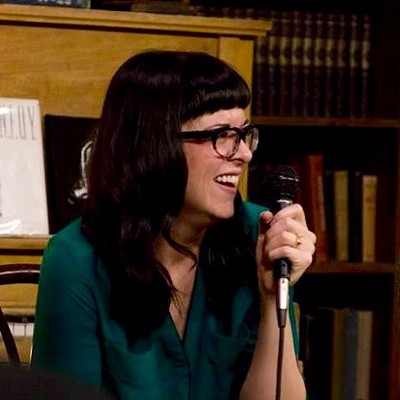I've noticed that since the Colorado Department of Public Health and Environment and the Colorado Initiative to Reduce Unintended Pregnancy launched their BeforePlay.org campaign in 2012, the same kind of hip accessibility could be making a comeback in the visual conversation about safer sex. And I am all about it.
See also: Breeality Bites: What a wonderful, genderqueer world!
Catch P.M. Dawn, MC Lyte and so many other rad cameos in this still relevant video on safe sex.
Though I went to Catholic school for the first nine years of my educational existence, sex was not a taboo topic in the house where I grew up. In parochial school, sex education was called "family life" and didn't actually involve any conversations about sex and sexuality. But when I was in preschool, my hippie parents gave me a very hippie-looking book of watercolor paintings describing heterosexual sex between a man and a woman: Both characters were naked the entire book, with the woman accompanied by a cat and the man accompanied by a dog, for what reason I don't know. I didn't get why two people lying down next to each other naked on one page led to a watercolor of a bloody, screaming baby on the next page, but, hey, at least my parents were trying.
Later on, when I was in Girl Scouts, we had a woman visit our troop and show us how to put a condom on a banana. Which was also cool, I guess, but as a sixth-grader, I had never seen an erect penis, so the banana's metaphorical/stand-in presence didn't mean much to me. When I was sixteen, my parents put me on birth control. I didn't ask nor was I given a choice, which sounds harsh as I type it, but I understand where they were coming from. Being a parent and thinking about your kids having sex must be terrifying.
I also grew up with a best friend whose mom was a nurse and educator active in the world of AIDS as a social issue. By middle school, she had inadvertently introduced me to figures like Keith Haring and Freddie Mercury -- artists who I would go on to idolize well into adulthood. This is also when I learned that I had to stand up for what I believed in -- and do my best to get others on board with causes I felt were important. In my 33 years, I have been lucky to be able to be a voice and platform for others as a writer, and even luckier to have only a handful of friends who must personally deal with HIV and AIDS.
By sixteen, I was a staunch safe-sex advocate; it was cool to be knowledgeable about choice. I was becoming a teenager in the semi-post-hysterical world of AIDS: By the mid-'90s, people like Pedro Zamora had given AIDS a human face and voice, and it was empowering. His presence on The Real World was probably one of the most powerful and informing instances in pop culture that shaped the way I thought about sex, sexuality, gender and choice.
As it was for other semi-suburbanite kids, MTV was my lifeline to popular culture and did a lot of work to make sure kids knew about safe sex. When No Alternative -- an album compiled by the AIDS-focused nonprofit Red Hot Organization that featured bands like Smashing Pumpkins and the Breeders -- was released in 1993, it was like the union of two things I really cared about: music and social justice related to the health and well-being of our own bodies. MTV played a heavy part in getting this record into the hands of teenagers like me, hosting live performances of the songs and, again, giving the topics of safe sex and HIV and AIDS prevention a platform.
Last year, I noticed some rather forward billboards appearing in my neighborhood from the BeforePlay.org campaign -- and I was really happy to see them. It's not that I think safe sex hasn't been getting as much positive pop-culture attention since the mid-'90s -- hell, in the last decade, condom companies themselves have embraced the coolness of safe sex with ads that are all about talking about sex (though I have yet to see them reach out to the hugely missed opportunity of the non-heterosexual demographic).
Now beforeplay.org has introduced memes as a way to get the word out about safe sex. Will this be effective/relatable for the 18-to-29-year old demographic the site hopes to reach? I have no idea -- though I will definitely ask my teenage sister and much younger friends, because they are smart and have informed opinions and will be honest about whether this Internet angle sucks or not.
I may not personally connect with these memes (I'm not their intended audience), but I do know that any time we talk about safe sex, sexuality and consent in an open forum, we are on the right track. The world is never going to stop having sex. Talking about sex -- or making a music video, Public Service Announcement or meme about it -- and putting sex in a positive light is really the only way. So cheers to beforeplay.org for getting out there and making it happen.Now, if only Salt-N-Pepa would remake its classic "Let's Talk About AIDS" video, maybe MTV would get cool again.
Be my voyeur (or better yet, let me stalk you) on Twitter: @cocodavies











